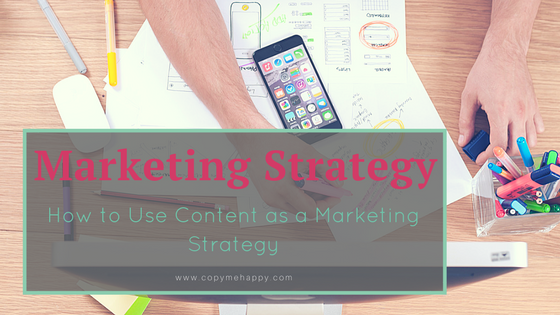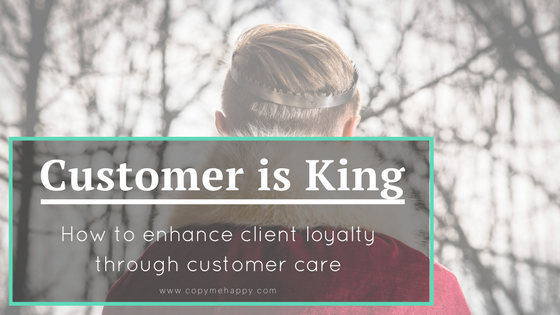Happy New Year! Wishing you all the best in 2018 with tons of success, good luck, and happiness. Live long and prosper!
It’s a new year and although resolutions are usually made to be broken – at least I broke a few of my resolutions before – it’s a good idea to do some marketing strategy planning now.
That is if you want to grow your business this year. Which I’m sure you do.
But…. coming up with a marketing plan can be sooooo overwhelming. There’s tons of information out there, and if you get into reading about funnels and buyer awareness, it can become a tad bit confusing. Am I right?
Anyway, I’m sure there’s only one question on your mind.
Where do I get leads? Aaaaaaah!
via GIPHY Before anyone asks: this is not me, check me out on my Why me? page.
Ok, calm down. Don’t pull out your hair just yet. I’m here for you…
Confessions of a copywriter
So, the truth is… Like most of my clients, I’ve been relying on outbound marketing to promote my business. Meaning, I’m contacting prospects to see if they need help with their marketing. Or, clients are referred to me by other clients, friends, or family. And honestly, sometimes outbound marketing can make me feel just a little bit like this:
via GIPHY Begging! Youuuuu….
Just a little bit.
But so far, this approach has been successful enough.
Only, inbound marketing, where clients come to you is a much more effective approach in terms of sales.
How? The content that you publish makes you an expert in the eyes of your prospects.
Badabing badaboom: content marketing 101 right there. (Seasoned marketers, go away, I didn’t write this blog for you)
Once a prospect client thinks you’re an expert he (or she!) needs less convincing to actually buy your services or products by the time he contacts you. And as an added benefit, your prospect won’t argue over pricing as much as when you get in touch with them.
Basically, you’re in a better negotiation position every time someone contacts you as you would be the other way around. As a matter of fact, when you do inbound marketing right, it will get you more leads for fewer effort and costs.
And that’s why I’m dedicating January to creating my marketing plan for 2018. Who’s with me?
Creating the perfect inbound marketing strategy
You could say that there are three stages to creating an effective inbound marketing strategy. These are:
- Knowing your client
- Making a marketing plan
- Sticking to the plan
Let me explain.
It seems super obvious but if you don’t know who your client is you won’t be able to connect with them, and your marketing efforts will simply fall flat.
via GIPHY: Can you tell I’m having fun with GIFs today?
Anyway, if you want to create a genuine connection with your clients you got to find out what their pain points are and solve them. You need to know where your prospect would go to find information about the type of services you offer. Because that’s what you want, you want your prospective client to find you. Once they find you, you need to conveniently leave them a piece of information that solves a problem they’re having. Keep in mind that to make them want to consume your content, you need to know what type of information your prospects are looking for. Do they like to watch videos or do they prefer to read articles? What type of lead magnet would attract them? Do they want to read a white paper or do they need a checklist?
Find out as much as you can about your perfect client. Until they can’t help but feel like:
via GIPHY I just had to include one New Girl GIF because this show makes me ugly laugh. Even going through the GIFs made me lol.
Once you’ve gathered as much information on your prospect as you can, you’re able to create a marketing plan. Think about your goals. Which result do you want to get out of your inbound marketing? Do you want to attract more website visitors? To generate leads? Or, do you want to position yourself as an expert?
via GIPHY What prof. X said.
Your goals determine the type of content you need to create. To attract more visitors, you might want to consider blogging. To generate leads, you need a free piece of content to give to prospects in exchange for their email address.
Sticking to the plan seems like a no-brainer, right? But what if you do not see any ROI? Well, I hate to break it to you, but with inbound marketing patience is key. It can take some time before you start seeing results. Give it at least 6 months to a year.
via GIPHY Even the A-team needed patience for their plans to work out. How are your plans any different?
Tracking results can be a bit hard because sometimes your results aren’t as tangible as a sale. And sometimes, you don’t exactly know if your inbound marketing efforts have made a difference in a deal. I’d advise you to track your website visitors, social shares and growth of your email list.
If all of this seems a bit overwhelming, just take it easy. The important thing to do is building your email list. You can do that with just one great lead magnet. Use social media to promote your lead magnet. Try to create content on a regular basis. Even if you blog only once a month, you can see results fast as this success story of my client Independent Expat Finance shows you.
Have questions about marketing? Post them in the comments below; I’d be happy to answer!
And if you’re wondering how you should get started, read my blog on your first step in setting up your inbound marketing here.


